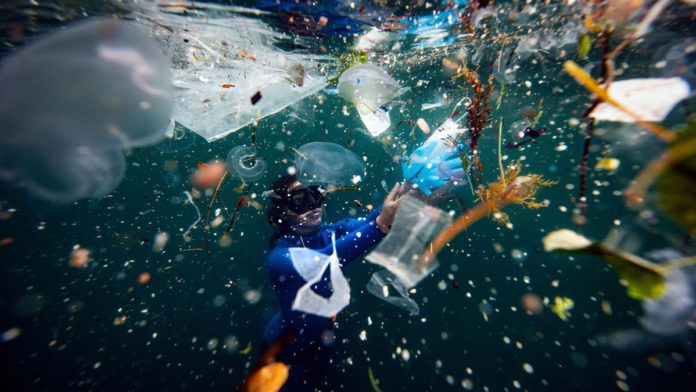A group of Chinese scientists from Sichuan University in southwest China has created soft robot fish that “eat” microplastics and might one day help clean up the filthy waters around the world. Researchers from Sichuan University in southwest China claimed that the bionic fish could also “self-heal” and absorb microplastics even when injured in a study that was published in the peer-reviewed journal ACS’ Nano Letters on June 22.

According to the researchers, the 1.3 cm (1/2 inch) long robot can swim up to 2.67 body lengths per second, outpacing the majority of artificial soft robots. Microplastics adhere to the surface of the bionic fish because it is composed of synthetic resin polyurethane. According to the researchers, the robot can continually absorb surrounding microplastics and carry them to a predetermined location because particular components in microplastics have strong chemical connections and electrostatic interactions with the fish material.
Nacre, often known as the “mother of pearl,” is found on the inside of clam shells and is composed of layers of calcium carbonate mineral-polymer composites and a main silk protein filler, which makes it robust and flexible. In comparison, traditional soft robot materials like hydrogels and elastomers get readily destroyed in water. Using the mother of pearl as a base, the research team created an elastomer actuator using gradient nanostructures based on sulfonated graphene and β-cyclodextrin, which resulted in polyurethane latex material that can withstand high temperatures.
The research team gradually created a fish-shaped robot that can swim in any direction while being powered by a light source. When a laser is focused on the fish’s tail, the light deforms the material, causing it to bend. Because polyurethane is also biocompatible, it can be safely digested if it is unintentionally consumed by other fish. The nanocomposite material used in its construction had a self-healing efficiency of up to 89%.
Robots today appear to be designed to replace all kinds of human occupations. They can carry heavy objects, carry out tedious activities, help in food delivery, scurry into tight areas for research, medical applications, agriculture or disaster recovery, or act as disposable stand-ins in potentially fatal circumstances like military warfare. Now, this soft robot developed by Sichuan University can address the long-time concern of microplastics in water bodies that threaten fragile ecosystems.
Read More: Does deploying robotic dogs at US-Mexico border pose a serious ethical conundrum?
Microplastics are tiny remnants of larger plastic debris that measure less than 5mm in size. They could be mistaken for food due to their small size and get lodged in an animal’s digestive system, starving it to death. Before being used, certain plastics are coated with harmful compounds that can kill neighboring marine life when the coating on microplastics dissolves.
Though there is no definitive statistic for how much plastic is in the world’s oceans, it is believed there are 24.4 trillion pieces of different microplastics in the upper seas, equivalent to around 30 billion 500-milliliter (17 fl oz) plastic water bottles.
It is challenging to clean the already contaminated water, even while decreasing plastic waste and filtering wastewater before it enters the ocean can help reduce the amount of microplastics in our seas. Even banning the production of certain single-use plastics, as done recently by Canada, would not help free the already polluted waters and microplastics. The minute particles can also stay trapped deep beneath the seafloor’s fissures and crevices, making it difficult for large, rigid robots to access these locations. The bionic fish has so far demonstrated its capacity to ingest pollutants in shallow water, but scientists intend to deploy it in deeper waters as well to study marine pollution.
The research study was funded by the Sichuan Natural Science Fund for Distinguished Young Scholars, the National Natural Science Foundation of China, and the National Key Research and Development Program of China.


